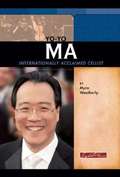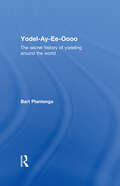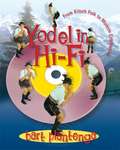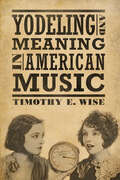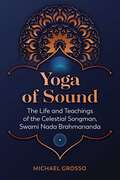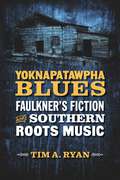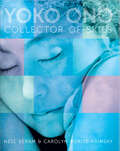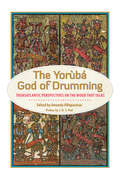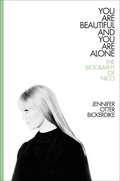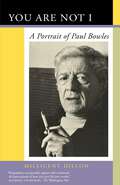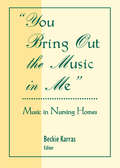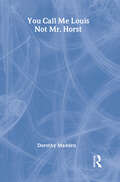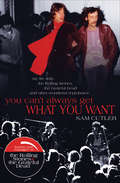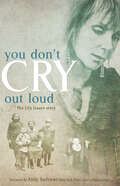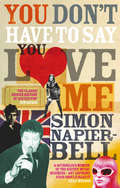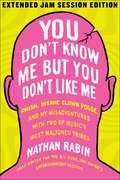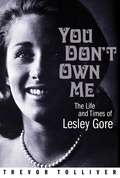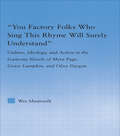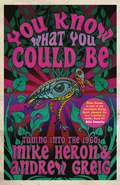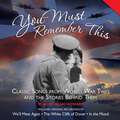- Table View
- List View
Yo-Yo Ma: Internationally Acclaimed Cellist
by Myra WeatherlyYo-Yo Ma ranks among the world's greatest and most popular cello players. He came to national attention at age 15 when he performed on television. After college, Ma began a career as a solo cellist performing with the world's major orchestras. He has expanded his career to serve as a musical educator and ambassador, sharing the common language of music with others throughout the world.
Yo-Yo Ma and Silkroad
by Rohit Deshpande Paul A. Gompers Scott Duke Kominers"Yo-Yo Ma, world-famous cellist and musical icon, stood inside the Visitor Center of the Tanglewood Music Center, a performance and music education complex in Lenox, Massachusetts. Through a window, he gazed out at the Koussevitzky Music Shed, a gorgeous open-air concert hall in which Ma had performed many, many times. It was midday—no music was playing—but the familiar setting, with its internal echoes of concerts past, helped Ma organize his thoughts."
Yo-Yo Ma and Silkroad
by Paul Gompers Scott Kominers Rohit Deshpande"Yo-Yo Ma, world-famous cellist and musical icon, stood inside the Visitor Center of the Tanglewood Music Center, a performance and music education complex in Lenox, Massachusetts. Through a window, he gazed out at the Koussevitzky Music Shed, a gorgeous open-air concert hall in which Ma had performed many, many times. It was midday—no music was playing—but the familiar setting, with its internal echoes of concerts past, helped Ma organize his thoughts."
Yodel-Ay-Ee-Oooo: The Secret History of Yodeling Around the World
by Bart PlantengaFirst Published in 2004. Routledge is an imprint of Taylor & Francis, an informa company.
Yodel in Hi-Fi
by Bart PlantengaYodel in Hi-Fiexplores the vibrant and varied traditions of yodelers around the world. Far from being a quaint and dying art, yodel is a thriving vocal technique that has been perennially renewed by singers from Switzerland to Korea, from Colorado to Iran. Bart Plantenga offers a lively and surprising tour of yodeling in genres from opera to hip-hop and in venues from cowboy campfires and Oktoberfests to film soundtracks and yogurt commercials. Displaying an extraordinary versatility, yodeling crosses all borders and circumvents all language barriers to assume its rightful place in the world of music.
Yodeling and Meaning in American Music (American Made Music Series)
by Timothy E. WiseTimothy E. Wise presents the first book to focus specifically on the musical content of yodeling in our culture. He shows that yodeling serves an aesthetic function in musical texts. A series of chronological chapters analyzes this musical tradition from its earliest appearances in Europe to its incorporation into a range of American genres and beyond. Wise posits the reasons for yodeling's changing status in our music. How and why was yodeling introduced into professional music making in the first place? What purposes has it served in musical texts? Why was it expunged from classical music? Why did it attach to some popular music genres and not others? Why does yodeling now appear principally at the margins of mainstream tastes?To answer such questions, Wise applies the perspectives of critical musicology, semiotics, and cultural studies to the changing semantic associations of yodeling in an unexplored repertoire stretching from Beethoven to Zappa. This volume marks the first musicological and ideological analysis of this prominent but largely ignored feature of American musical life.Maintaining high scholarly standards but keeping the general reader in mind, the author examines yodeling in relation to ongoing cultural debates about singing, music as art, social class, and gender. Chapters devote attention to yodeling in nineteenth-century classical music, the nineteenth-century Alpine-themed song in America, the Americanization of the yodel, Jimmie Rodgers, and cowboy yodeling, among other topics.
Yoga of Sound: The Life and Teachings of the Celestial Songman, Swami Nada Brahmananda
by Michael GrossoA guide to harnessing the vibration that created the universe for healing and spiritual awakening• Shares profound lessons from Swami Nada Brahmananda, a master of the yoga of sound and vibration• Centers on three life-enhancing themes: controlling the mind, diet and practices conducive to healing and perfect health, and how music can be used to transform consciousness and enrich our spiritual life• Also paints a vivid portrait of New York City in the 1970s and its underground arts and music sceneNot long after obtaining his Ph.D. in philosophy from Columbia University in 1971, Michael Grosso had an extraordinary experience in Greenwich Village, New York, that led him to realize he needed to balance his overly intellectual life with music. He met Swami Nada Brahmananda, a former court musician for the King of Mysore, famous throughout India for being a master of Taan music and sound yoga as well as for his supernatural control of his body. Grosso began studying with Swami Nada and found his life profoundly changed. Sharing the lessons of Swami Nada Brahmananda as well as painting a vivid portrait of New York City in the 1970s—and its vibrant and chaotic underground arts and music scene—Grosso explores Swami Nada&’s Indian yoga of sacred sound in depth. He reveals how the tradition centers on the sound or vibration that created the universe, its personal cultivation, and its power to heal, enlighten, and offer insight about how to live in the Kali Yuga, the Age of Conflict. Grosso also examines the siddhis, or extraordinary powers, that can arise from this work, detailing the otherworldly abilities of his master. The lessons that Grosso shares center on three life-enhancing themes: controlling the mind, which provides the very essence of a happy life; diet and practices conducive to healing and perfect health—Swami Nada himself never knew a day of sickness in all of his 97 years; and how music in all its forms can be used to transform consciousness and enrich our spiritual life. Revealing Swami Nada Brahmananda as the very embodiment of a Celestial Songman, Grosso shows how, by practicing the yoga of sound, we can embody Swami Nada&’s greatest lesson of all: that we can all learn to make music from the discordant notes of our lives and sing our way out of the Kali Yuga.
Yoknapatawpha Blues: Faulkner's Fiction and Southern Roots Music (Southern Literary Studies)
by Tim A. RyanDuring the 1920s and 1930s, Mississippi produced two of the most significant influences upon twentieth-century culture: the modernist fiction of William Faulkner and the recorded blues songs of African American musicians like Charley Patton, Geeshie Wiley, and Robert Johnson. In Yoknapatawpha Blues, the first book examining both Faulkner and the music of the south, Tim A. Ryan identifies provocative parallels of theme and subject in diverse regional genres and texts. Placing Faulkner's literary texts and prewar country blues song lyrics on equal footing, Ryan illuminates the meanings of both in new and unexpected ways. He provides close analysis of the Great Mississippi Flood of 1927 in Faulkner's "Old Man" and Patton's "High Water Everywhere"; racial violence in the story "That Evening Sun" and Wiley's "Last Kind Words Blues"; and male sexual dysfunction in Sanctuary and Johnson's "Dead Shrimp Blues." This interdisciplinary study reveals how the characters of Yoknapatawpha County and the protagonists in blues songs similarly strive to assert themselves in a threatening and oppressive world. By emphasizing the modernism found in blues music and the echoes of black vernacular culture in Faulkner's writing, Yoknapatawpha Blues links elucidates the impact of both Faulkner's fiction and roots music on the culture of the modern South, and of the nation.
Yoko Ono: Collector of Skies
by Nell Beram Carolyn Boriss-KrimskyThis lyrical biography explores the life and art of Yoko Ono, from her childhood haiku to her avant-garde visual art and experimental music. An outcast throughout most of her life, and misunderstood by every group she was supposed to belong to, Yoko always followed her own unique vision to create art that was ahead of its time and would later be celebrated. Her focus remained on being an artist, even when the rest of world saw her only as the wife of John Lennon. Yoko Ono’s moving story will inspire any young adult who has ever felt like an outsider, or who is developing or questioning ideas about being an artist, to follow their dreams and find beauty in all that surrounds them.
Yoko Writes Her Name
by Rosemary WellsYoko is so excited for the first day of school. She's just learned to write her name. But when Mrs. Jenkins asks Yoko to show everyone, Olive and Sylvia make fun of her Japanese writing. "Yoko can't write. She's only scribbling!
The Yoruba God of Drumming: Transatlantic Perspectives on the Wood That Talks
by J. D. PeelAs one of the salient forces in the ritual life of those who worship the pre-Christian and Muslim deities called orishas, the Yorùbá god of drumming, known as Àyàn in Africa and Añá in Cuba, is variously described as the orisha of drumming, the spirit of the wood, or the more obscure Yorùbá praise name AsòròIgi (Wood That Talks). With the growing global importance of orisha religion and music, the consequence of this deity's power for devotees continually reveals itself in new constellations of meaning as a sacred drum of Nigeria and Cuba finds new diasporas. Despite the growing volume of literature about the orishas, surprisingly little has been published about the ubiquitous Yorùbá music spirit. Yet wherever one hears drumming for the orishas, Àyàn or Añá is nearby. This groundbreaking collection addresses the gap in the research with contributions from a cross-section of prestigious musicians, scholars, and priests from Nigeria, the Americas, and Europe who have dedicated themselves to studying Yorùbá sacred drums and the god sealed within. As well as offering multidisciplinary scholarly insights from transatlantic researchers, the volume includes compelling first-hand accounts from drummer-priests who were themselves history-makers in Nigerian and Cuban diasporas in the United States, Venezuela, and Brazil. This collaboration between diverse scholars and practitioners constitutes an innovative approach, where differing registers of knowledge converge to portray the many faces and voices of a single god.
Yoruba Oral Tradition in Islamic Nigeria: A History of Dàdàkúàdá (Global Africa)
by Abdul-Rasheed Na'AllahThis book traces Dàdàkúàdá’s history and artistic vision and discusses its vibrancy as the most popular traditional Yoruba oral art form in Islamic Africa. Foregrounding the role of Dàdàkúàdá in Ilorin, and of Ilorin in Dàdàkúàdá the book covers the history, cultural identity, performance techniques, language, social life and relationship with Islam of the oral genre. The author examines Dàdàkúàdá’s relationship with Islam and discusses how the Dàdàkúàdá singers, through their songs and performances, are able to accommodate Islam in ways that have ensured their continued survival as a traditional African genre in a predominantly Muslim community. This book will be of interest to scholars of traditional African culture, African art history, performance studies and Islam in Africa.
You Are Beautiful and You Are Alone: The Biography of Nico
by Jennifer Otter BickerdikeA new, definitive biography of the iconic and mysterious singer, Warhol superstar, Velvet Underground collaborator: influential solo artist Nico.YOU ARE BEAUTIFUL AND YOU ARE ALONE is a new biography of Nico, the mysterious singer best known for her work with the Velvet Underground and her solo album Chelsea Girl. Her life is tangled in myth--much of it of her own invention. Rock and roll cultural historian Jennifer Bickerdike delivers a definitive book that unravels the story while making a convincing case for Nico's enduring importance. Over the course of her career, Nico was an ever-evolving myth: art film house actress, highly coveted fashion model, Dietrich of Punk, Femme Fatale, Chelsea Girl, Garbo of Goth, The Last Bohemian, Heroin Junkie. Lester Bangs described her as 'a true enigma.' At age 27, Nico became Andy Warhol's newest Superstar, featuring in his one commercial break out hit film Chelsea Girls and garnering the position of chanteuse for the Velvet Underground. It wasn't Nico's musical chops which got her the gig; it was her striking beauty. Her seeming otherworldly and unattainable presence was further amplified by her reputation for dating rock stars (Brian Jones, Bob Dylan, Jim Morrison, among others). She became famous for being Nico. Yet Nico's talent and her contribution to rock culture are often overlooked. She spent most of her career as a solo artist on the road, determined to make music, seemingly against all the odds, enduring empty concert halls, abusive fans, and the often perilous reality of being an ageing artist and drug addict. She created mesmerizing and unique projects that inspired a generation of artists, including Henry Rollins, Morrissey, Siousxie Sioux and the Banshees and Iggy Pop. Drawing on the archives at the Andy Warhol Museum and at Nico's record labels, various private collections, and rarely seen footage, and featuring exclusive new interviews from those who knew her best, including Iggy Pop and Danny Fields, and those inspired by her legacy, YOU ARE BEAUTIFUL AND YOU ARE ALONE reveals the complicated, often compromised, self-destructive and always head strong woman behind the one-dimensional myths.
You Are Not I: A Portrait of Paul Bowles
by Millicent DillonThe famously enigmatic writer-composer Paul Bowles is the subject of Millicent Dillon's unforgettable new book. Her portrait of the chameleonlike artist is much more than an account of Bowles's life, however. It is also a meditation on biography that questions the biographer's role, the subject's credibility, and the very nature of "truth" in the telling of a life.Millicent Dillon first met Paul Bowles in Tangier in 1977, when she was writing a biography of his wife, the author Jane Bowles, who died in 1973. Dillon returned to Morocco in 1992 to work with Bowles on a book about his own life. In Bowles's book-lined apartment often crowded with visitors, Dillon observes the magnetism the aging artist exerts on anyone who comes into his circle. Bowles talks of his difficult childhood and of his grief over Jane's long illness, of exile, dreams, and madness. He is charming and evasive with Dillon, generous and devious. As the book unfolds, Dillon's own reflections and concerns surface alongside details of Bowles's daily life, his physical condition, his interactions with others. Her portrait of the artist is seen simultaneously with her construction of that portrait, and in a kind of literary legerdemain we are able to observe Dillon on the biographical canvas along with Bowles and his deceased wife.Author of the international bestseller The Sheltering Sky and numerous other works, as well as an acclaimed composer, Paul Bowles has had an immensely rich creative life. Millicent Dillon seems to have been destined to write this unconventional biography of the artist, and the result is wonderful, disturbing, and strangely compelling, like Paul Bowles himself.
You Bring Out the Music in Me: Music in Nursing Homes
by D Rosemary CassanoAn enlightening book, You Bring Out the Music in Me, explores how music motivates, enriches, touches, relaxes, and energizes the elderly in nursing homes. Practicing music therapists explain how music “speaks” to all of us, regardless of our language, culture, or abilities and how it can be used with groups and individuals in nursing homes to encourage relaxation and expression of feeling and increase socialization. The chapters encompass both music therapy practice in gerontology as well as practical ideals and suggestions for activities directors who want to use music in their nursing home activities programs. This readable book includes a history of music therapy, the need for research in the field, discussions of music in groups and music with individuals, and a useful resource list of music materials.
You Call Me Louis, Not Mr. Horst
by Dorothy MaddenDorothy Madden's lively book about Louis Horst (You don't call me Mr. Horst, you call me Louis, he always said) makes for compulsive reading. She follows Horst's extraordinary life, punctuating her narrative with reminiscences, illuminating anecdotes from her personal store of memories, as well as the shared thoughts of others, all interspersed with her choice of evocative and expressive photographs and illustrations, to create a dynamic and memorable portrait of this key figure in American modern dance. Louis Horst: musician, composer, pianist, violonist, pit player, arranger, super accompanist (all sorts), conductor, régisseur, stage manager, tour tartar, catalyst, editor, writer, critic, teacher, consoler, the Sherlock Holmes of restaurants, keeper of journals and budgets, loan provider, lover, friend...
You Can't Always Get What You Want: My Life with the Rolling Stones, the Grateful Dead and Other Wonderful Reprobates
by Sam CutlerA &“straight-dope, tell-all account&” of touring with two of the world&’s greatest bands of the 60s and 70s—A &“fast-moving narrative of rock-n-roll excess&” (Publishers Weekly). In this all-access memoir of the psychedelic era, Sam Cutler recounts his life as tour manager for the Rolling Stones and the Grateful Dead—whom he calls the yin and yang of bands. After working with the Rolling Stones at their historic Hyde Park concert in 1969, Sam managed their American tour later that year, when he famously dubbed them &“The Greatest Rock Band in the World.&” And he was caught in the middle as their triumph took a tragic turn during a free concert at the Altamont Speedway in California, where a man in the crowd was killed by the Hell&’s Angels. After that, Sam took up with the fun-loving Grateful Dead, managing their tours and finances, and taking part in their endless hijinks on the road. With intimate portraits of other stars of the time—including Janis Joplin, Jimi Hendrix, the Band, the Allman Brothers, Pink Floyd, and Eric Clapton—this memoir is a treasure trove of insights and anecdotes that bring some of rock&’s greatest legends to life.
You Don't Cry Out Loud: The Lily Isaacs Story
by Lily IsaacsA powerful, unforgettable account of Christ's grace, mercy, and His work in their lives! A talented daughter of Holocaust survivors, Lily Isaacs is a woman who has felt pain and loss, and found the incomparable joy of a life with Jesus Christ. As a new Christian believer, she became estranged from her Jewish parents because of her faith, yet she never walked alone, always clinging to the hope she found in Christ. Throughout her music and that of her children, who together form the beloved and multi-award winning group The Isaacs, you hear the resonating inspirational legacy of this family's faith journey. An autobiographical look at Lily's life, from being a Jewish folk singer to serving as vocalist and matriarch of The Isaacs The powerful account of her struggle with a once unknown faith and how she finally "cried her way to God from the church's back pew" The incredible insights behind heartbreaking moments which were her greatest opportunities of faith. Whether surviving breast cancer or a challenging career, Lily's steady refrain has been one of God's constant love, comfort, and strength. With a remarkable and unforgettable mix of acoustic, gospel, and country music, she and The Isaacs continue to inspire and entertain audiences in churches and on stage around the world!
You Don't Have To Say You Love Me
by Simon Napier-BellYou probably know Simon Napier-Bell as the manager of the Yardbirds. Or you may know him as the man who managed Marc Bolan, or Japan. You should definitely know him as the man who managed Wham! And if none of these rings a bell, maybe you'll remember him as the man who co-wrote 'You Don't Have To Say You Love Me' for Dusty Springfield. You Don't Have To Say You Love Me is one of the funniest books you will read and equally provoking. From his revelation that the entire music industry was motivated by sex, to an embarrassing come-on from a suicidal Brian Epstein, it's all shocking stuff. But when you're on the run from the German police with Marc Bolan, brothel-hopping with Keith Moon and generally living the life of Riley at the music industry's expense, it would be a shame not to share those amazing experiences with the rest of the world, wouldn't it? Of all the great pop-music books written, it is worth savouring You Don't Have To Say You Love Me for its brilliant sideways insight into one of the most exciting cultural periods Britain has ever seen.
You Don't Know Me but You Don't Like Me
by Nathan RabinFilled with veteran pop culture writer Nathan Rabin's "trademark humor, quirkiness, and self-deprecation" (USA TODAY) comes a gonzo exploration of two of music's most obsessed fanbases: Phish's neo-hippie following and hip-hop duo Insane Clown Posse's "Juggalos." When memoirist and head writer for The A.V. Club Nathan Rabin first set out to write about obsessed music fans, he had no idea the journey would take him to the deepest recesses of both the pop culture universe and his own mind. For two very curious years, Rabin, who Mindy Kaling called "smart and funny" in The New Yorker, hit the road with two of music's most well-established fanbases: Phish's hippie fans and Insane Clown Posse's notorious "Juggalos." Musically or style-wise, these two groups could not be more different from each other, and Rabin, admittedly, was a cynic about both bands. But once he gets deep below the surface, past the caricatures and into the essence of their collective cultures, he discovers that both groups have tapped into the human need for community. Rabin also grapples with his own mental well-being--he discovers that he is bipolar--and his journey is both a prism for cultural analysis and a deeply personal exploration, equal parts humor and heart.
You Don't Need a Dick to DJ
by Smokin JoBefore she became Smokin Jo - the most famous and visible of the first generation of 'superstar DJs' - Joanne Joseph was a young girl growing up in a children's home with her sister. Until her mother returned and whisked the siblings away just before secondary school to a flat on the Portobello Road, her life was devoid of music: the home didn't allow it, apart from hymns and carols at Christmas.As she entered the turbulent years of adolescence, Jo found herself pulled towards Soho and the burgeoning underground acid house scene, instantly finding herself at home amongst other artists, musicians and misfits who breathed and survived on dance music and ecstasy. Within a couple of years, in a lightning-fast ascent, Jo claimed her permanent place as one of England's most exciting and revered DJs of the British rave scene. In 1992, Jo was awarded DJ of the Year in DJ Magazine's list of Top 100 DJ's. To this day she is still the only woman to achieve this accolade.This alternately celebratory and brutal memoir tells a story full of change, growth and determination. It documents Jo's life and loves; her struggles with drink and drugs and journey towards peace and sobriety. It documents the highs and lows of rave culture in an unprecedented way through Jo herself: the elation and euphoria that comes with entertaining an audience as well as the misogyny, the racism, the prejudice and homophobia of the scene, as told by someone who has been at the hard end of these experiences. You Don't Need a Dick to DJ is an extraordinary, moving and unforgettable story from a pioneer and survivor; perhaps the most honest and startling memoir yet to emerge from the club scene.
You Don't Own Me: The Life and Times of Lesley Gore
by Trevor Tolliver1963 tail fins were in, sock hops were hot, and a fairytale white knight was president. That summer, sixteen year-old singer Lesley Gore released her debut single, "It's My Party," propelling her to Number One on the charts. For the next several years, the crowned Princess of Pop dominated the radio with a string of hits including "Judy's Turn to Cry," "She's A Fool," "Sunshine, Lollipops & Rainbows," and the rousing anthem for independence, "You Don't Own Me," making her the most successful and influential solo female artist of the 60s. But beneath the bubblegum facade was a girl squirming against social and professional pressures to simply be herself and to forge a future where she could write and perform music beyond the trappings of teenage angst and love triangles. Assembled over five years of research and interviews, this is the first and long overdue biography of Lesley Gore, one of pop music's pioneering Mothers, which chronicles her meteoric rise to fame, her devastating fall from popularity and struggle for relevance in the 1970s, and her reemergence as a powerful songwriter, political activist, and camp icon. The biography includes behind-the-scenes stories about the making of her hit records, debunks or clarifies popular myths about her career, and places her remarkable life and times within a historical context to reveal how her music was both impacted by, and contributed to, each decade of her astounding fifty-year career.
You Factory Folks Who Sing This Song Will Surely Understand: Culture, Ideology, and Action in the Gastonia Novels of Myra Page, Grace Lumpkin, and Olive Dargin (Literary Criticism and Cultural Theory)
by Wes MantoothFirst published in 2007. Routledge is an imprint of Taylor & Francis, an informa company.
You Know What You Could Be: Tuning into the 1960s
by Mike Heron Andrew Greig'Mike Heron, as part of the Incredible String Band, changed the way I looked at music. Read it!' Billy Connolly'Mike Heron's lyrics always sparkled with wit and warmth and his prose is a delightful continuation. The book evokes a smoky, unheated eccentric Edinburgh that was a crucible for so much creativity.' Joe Boyd, author of White BicyclesThis singular book offers two harmonising memoirs of music making in the 1960s. Mike Heron for the first time writes vividly of his formative years in dour, Presbyterian Edinburgh. Armed with a love of Buddy Holly, Fats Domino and Hungarian folk music, he plays in school cloakrooms, graduates to rock, discovers the joy of a folk audience, starts writing songs, tries to talk to girls, wishes he was a Beatnik all while training as a reluctant accountant. When asked to join Robin Williamson and Clive Palmer, the Incredible String Band are formed - and their wildly innovative, astounding music became indelibly linked with the latter Sixties.Andrew Greig was a frustrated provincial schoolboy when he heard their songs. It changed everything. Undaunted by a lack of experience and ability, he formed a band in their image. Fate & Ferret populated back-country Fife with Pan, nymphs and Apollo, met the String Band and caught the fish lorry to London to hang around Joe Boyd's Witchseason office, watching at the fringes of the blooming Underground scene. It was forty years later that he and Mike became friends.These entwined stories will delight anyone who has loved the Incredible String Band; and their differing portraits of that hopeful, erratic and stubborn stumble towards the life that is ours will strike a chord with everyone.
You Must Remember This: Classic Songs from World War Two and the Stories Behind Them
by Maurice Sellar Steven SeidenbergRemembering songs from the radio, from dance bands and music halls, from the popular films of the period, and from the ENSA tours that took British entertainers to the troops, this audiobook recaptures the spirit of the World War II years through the music and songs. It includes information about the legendary entertainers of the era, along with 23 full-length original recordings of the songs they made famous. These songs, moving and inspiring in equal measure, allow a glimpse into a world at war and the heroic effort of the British people that eventually brought victory and peace.Songs include: We'll Meet Again, The White Cliffs of Dover, In The Mood and Lili Marlene.
